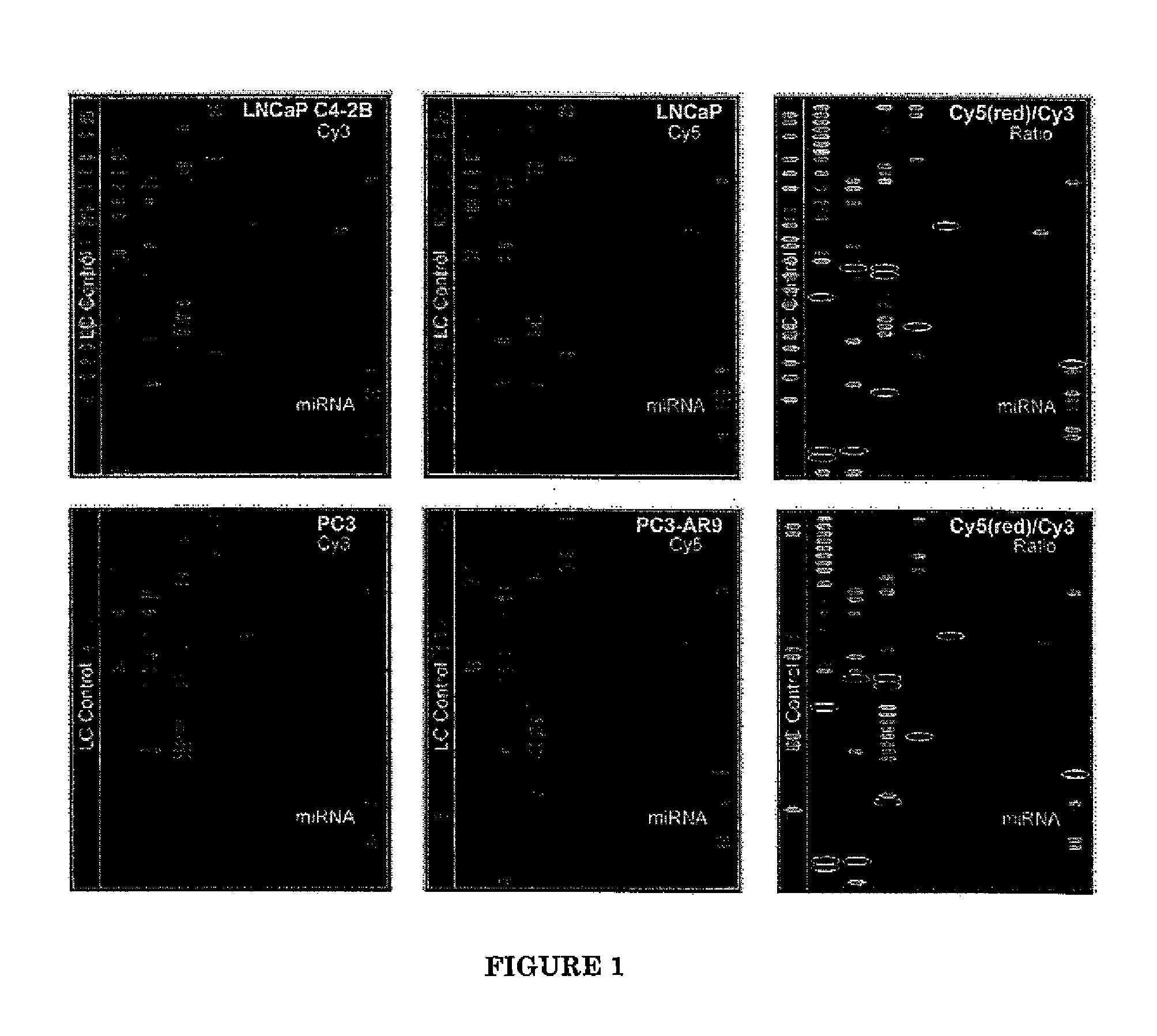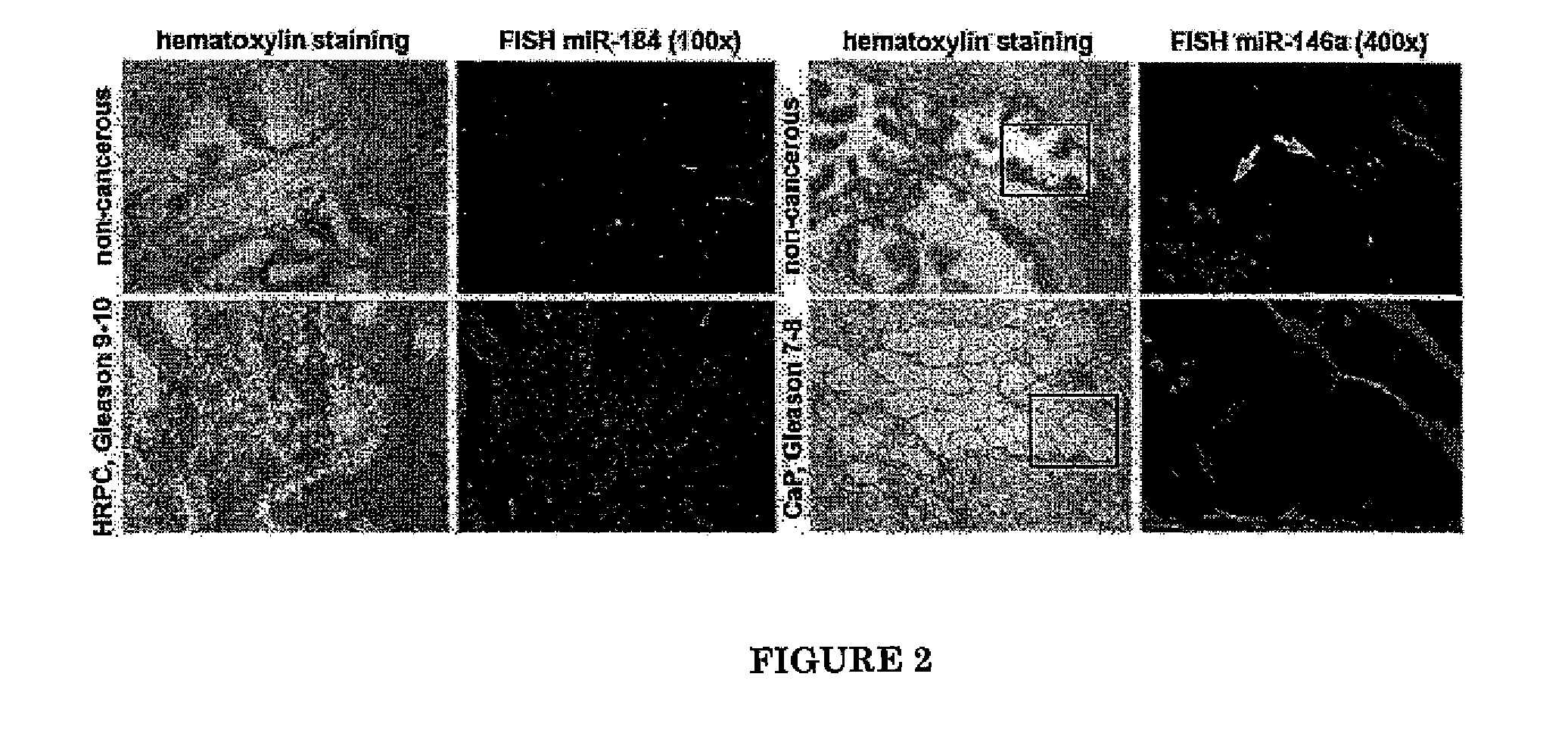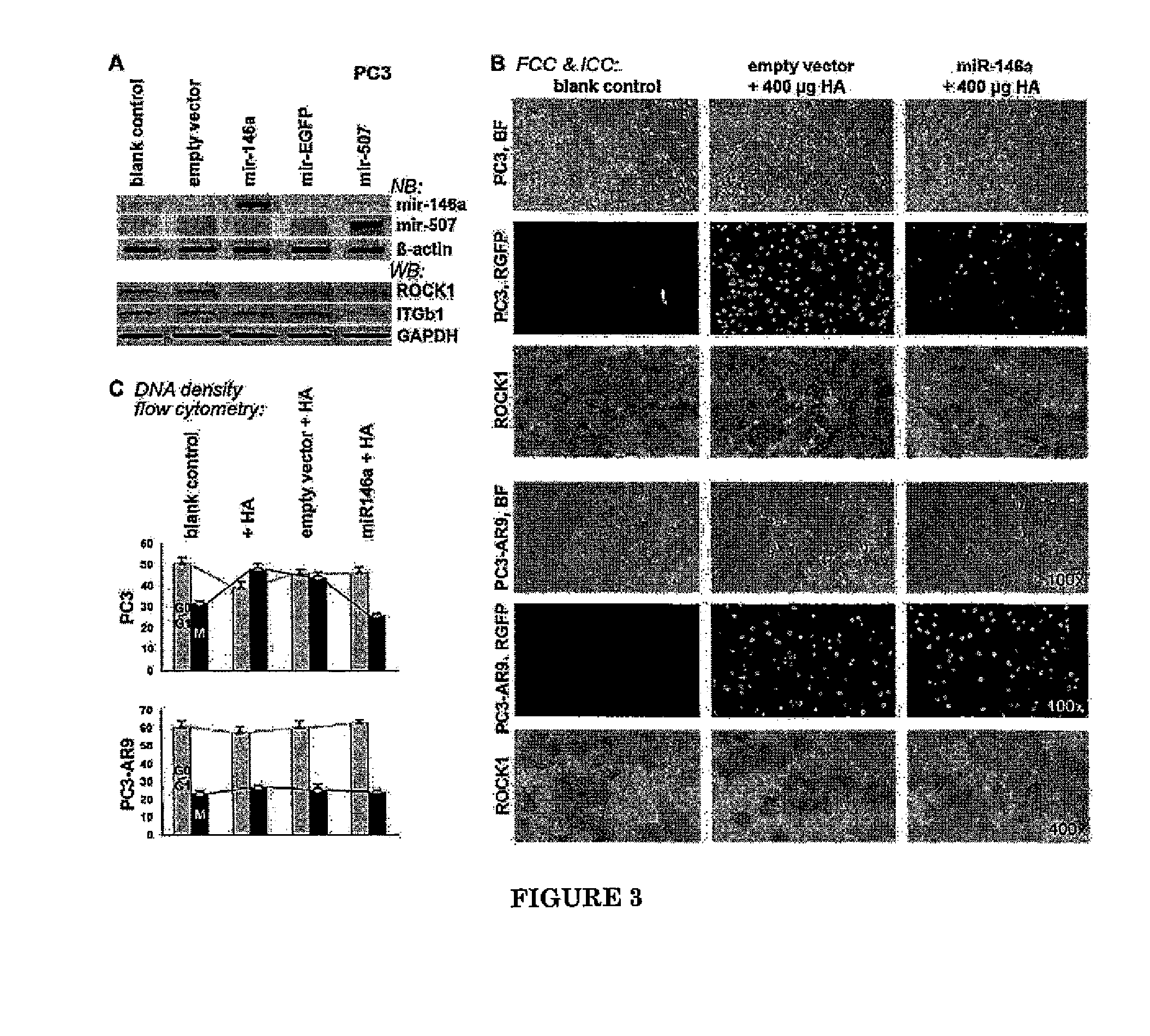Preventing hyaluronan-mediated tumorigenetic mechanisms using intronic RNAs
a tumorigenetic and intronic technology, applied in the field of preventing hyaluronan-mediated tumorigenetic mechanisms using intronic rnas, can solve the problems of limited patient samples used, inconsistent results among these studies,
- Summary
- Abstract
- Description
- Claims
- Application Information
AI Technical Summary
Benefits of technology
Problems solved by technology
Method used
Image
Examples
Embodiment Construction
Abbreviations
[0015]miRNA, microRNA; HRPC, hormone-refractory prostate cancer; HA, hyaluronan; CD168 (RHAMM), receptor for hyaluronan-mediated motility; ROCK, Rho-activated protein kinase; PI3K, phosphatidylinositol-(3,4,5)P3 kinase; eIF4E, cap-dependent eukaryotic initiation factor 4E; FISH, fluorescent in-situ hybridization; hBMEC, human bone marrow endothelial cell.
[0016]The following examples are intended to illustrate, but not to limit, the scope of the invention. While such examples are typical of those that might be used, other procedures known to those skilled in the art may alternatively be utilized. Indeed, those of ordinary skill in the art can readily envision and produce further embodiments, based on the teachings herein, without undue experimentation.
Materials and Methods
Cell Culture and Treatments
[0017]Human prostate cancer cell lines, LNCaP and PC3 cells were obtained from the American Type Culture Collection (ATCC, Rockville, Md.), and the C4-2B and PC3-AR9 cell line...
PUM
| Property | Measurement | Unit |
|---|---|---|
| emission wavelength | aaaaa | aaaaa |
| excitation wavelength | aaaaa | aaaaa |
| length | aaaaa | aaaaa |
Abstract
Description
Claims
Application Information
 Login to View More
Login to View More - R&D
- Intellectual Property
- Life Sciences
- Materials
- Tech Scout
- Unparalleled Data Quality
- Higher Quality Content
- 60% Fewer Hallucinations
Browse by: Latest US Patents, China's latest patents, Technical Efficacy Thesaurus, Application Domain, Technology Topic, Popular Technical Reports.
© 2025 PatSnap. All rights reserved.Legal|Privacy policy|Modern Slavery Act Transparency Statement|Sitemap|About US| Contact US: help@patsnap.com



